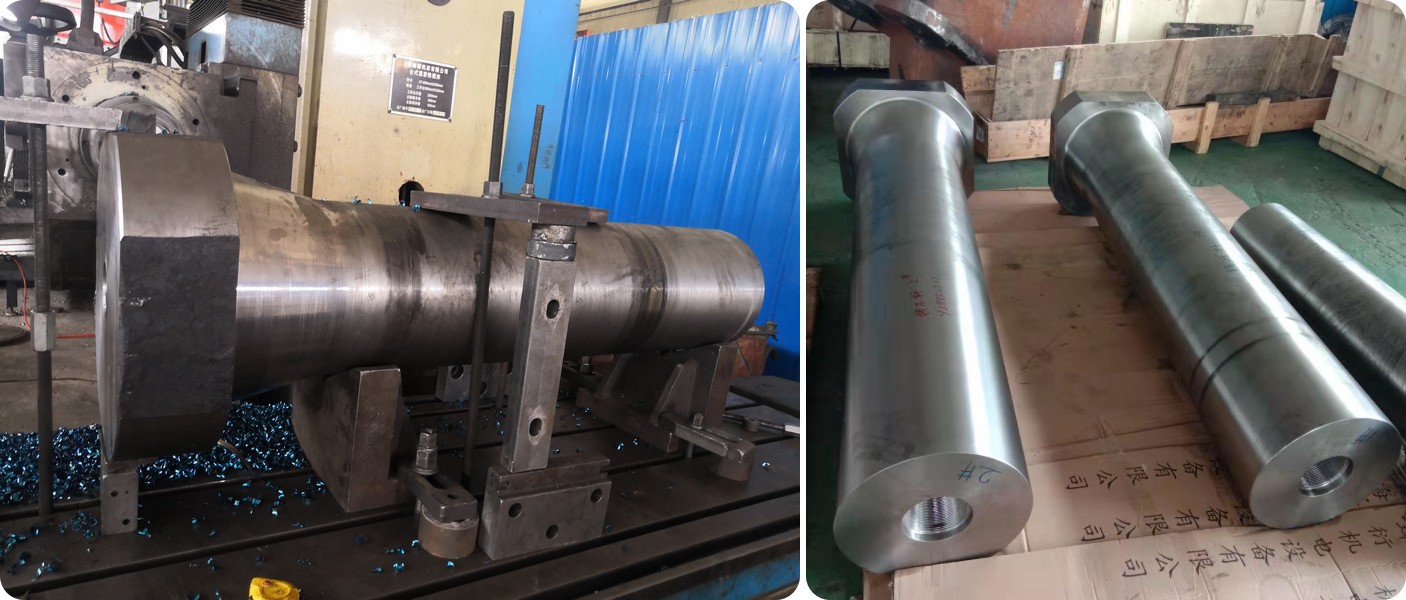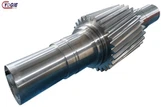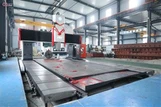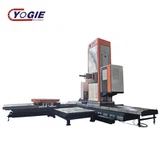Extrusion Press Stem
Products Description
An extrusion press stem is a crucial component in the extrusion process used in manufacturing industries. It is a cylindrical metal shaft or rod that is inserted into the ram of an extrusion press machine.During the extrusion process, the stem plays a vital role in applying force to the billet or material being extruded. The stem is connected to the ram and moves forward, pushing the billet through a die to create the desired shape. The stem applies intense pressure on the material, forcing it through the small opening of the die, which results in the material taking on the shape of the die.
Extrusion presses are commonly used in the production of various metal products, such as aluminum profiles, rods, tubes, and other complex shapes. The stem's design and characteristics depend on the specific requirements of the extrusion process, including the material being extruded, the desired shape, and the required force.The stem needs to be durable and able to withstand the high pressures involved in extrusion. It is typically made from a sturdy material, such as steel, that can handle the forces involved and provide long-lasting performance. The stem may undergo regular maintenance and occasional replacement due to wear and tear from the extrusion process.
Products Show

Main functions
The extrusion press stem, also known as the extrusion ram or plunger, is a critical component of an extrusion press machine. It is a large, solid rod or cylinder that is driven by hydraulic or mechanical force to push the material through the extrusion die. The key functions of an extrusion press stem are as follows:
Material movement: The primary function of the extrusion press stem is to provide the necessary force to move the material, typically a metal billet or slug, through the extrusion press chamber and into the extrusion die. The stem applies pressure to the material, forcing it to flow and take the shape of the die orifice.
Pressure generation: The extrusion press stem is responsible for generating and maintaining the required pressure during the extrusion process. It is driven by a hydraulic system that applies force to the stem, exerting pressure on the material within the extrusion chamber. The pressure is crucial for facilitating plastic deformation and shaping the material into the desired extruded profile.
Temperature control: In some cases, the extrusion press stem may be equipped with heating or cooling elements to control the temperature of the material during the extrusion process. Heating the stem can help maintain the material at an elevated temperature, making it more malleable and easier to extrude. Cooling the stem can control the temperature and prevent overheating or material sticking.
Alignment and guidance: The extrusion press stem ensures the proper alignment and guidance of the material as it moves through the extrusion die. It is designed with precision to fit within the extrusion chamber and maintain accurate alignment with the die opening. This alignment ensures that the material flows smoothly and follows the desired extrusion path.
Safety features: The extrusion press stem is typically equipped with safety features to protect the operator and prevent accidents during operation. These may include limit switches, safety interlocks, and emergency stop mechanisms to ensure safe operation and prevent damage to the extrusion press or tooling.
Features and advantages of extrusion press stem
▲Durability: Extrusion press stems are typically made from high-quality and durable materials, such as hardened steel, to withstand the extreme forces and pressures involved in the extrusion process. This ensures that the stem can endure repeated use and maintain its performance over time.
▲Precision and Accuracy: The design and manufacturing of extrusion press stems focus on achieving precise and accurate extrusion results. The stem's dimensions, surface finish, and alignment are crucial to ensure consistent and uniform extrusion of the material, resulting in high-quality finished products.
▲Customizability: Extrusion press stems can be customized to meet specific manufacturing requirements. The stem's dimensions, shape, and surface characteristics can be tailored to produce different profiles and shapes during the extrusion process, providing versatility and flexibility in manufacturing operations.
▲Heat Resistance: The stem is subjected to high temperatures during the extrusion process, particularly when dealing with materials like metals. Therefore, it is essential for the stem to have excellent heat resistance properties to withstand the elevated temperatures without deformation or degradation.
▲Efficient Force Transmission: Extrusion press stems are designed to efficiently transmit force from the ram to the material being extruded. They are engineered to minimize energy loss and ensure maximum force is applied to the billet, resulting in efficient material flow and reduced energy consumption.
▲Longevity: With proper maintenance and care, extrusion press stems can have a long lifespan, contributing to cost-effectiveness and reduced downtime in manufacturing operations. Regular inspections, lubrication, and occasional replacements when necessary can help extend the stem's service life.
▲Compatibility: Extrusion press stems are designed to be compatible with specific extrusion press machines. Manufacturers often provide stems that are precisely engineered to fit their equipment, ensuring proper alignment, smooth operation, and optimized performance.

In summary, the features and advantages of an extrusion press stem include durability, precision, customizability, heat resistance, efficient force transmission, longevity, and compatibility. These qualities contribute to the overall effectiveness and productivity of the extrusion process, resulting in high-quality finished products and operational efficiency.
Testing
►Dimensional inspection: This test involves measuring the dimensions of the machined part to ensure that it meets the required specifications and tolerances.
►Hardness testing: This test involves measuring the hardness of the machined part to ensure that it meets the required strength and durability requirements.
►Material analysis: This test involves analyzing the material properties of the machined part to ensure that it is the correct material and meets the required standards.
►Non-destructive testing (NDT): This type of testing involves using methods such as ultrasonic testing, magnetic particle inspection, or dye penetrant inspection to detect defects in the machined part without causing damage.
►Performance testing: This test involves testing the performance of the machined part in the actual application to ensure that it meets the required performance requirements.
►Magnetic particle inspection (MPI): This method uses magnetic fields and iron particles to detect surface and near-surface defects in the gear shafts, such as cracks or inclusions. The gear shaft is magnetized and then iron particles are applied to the surface. Any defects will attract the particles and produce a visible indication.
About US

Luoyang Yujie Industry &Trade Co.Ltd located in Luoyang City, one of the main heavy industrial bases in China. We specialize in the production of nonstandard machinery parts. For the nonstandard machine parts, we can produce gears, shafts, sprockets, molds, rollers, pulley, mining machine parts, etc as per customer drawing and requirements.
Contact US
Do you have any specific questions about the design and manufacture of Extrusion Press Stem ? Contact Yogie!Our sales engineers will work with you from start to finish to ensure that your project is completed to your requirements.
![]()
tel: +86-379-65163600
![]()
phone: +86-15036387078
![]()
envelope: sales@yujieindustry.com
![]()
fax:+86-379-65163600
![]()
address:No.9, Sanxi Road, Jianxi Industrial Park, Luoyang City, Henan, China 471003
![]()
whatsapp: 8615036387078
Hot Tags: extrusion press stem, manufacturers, supplier, factory, customized, cheap, price, in stock, for sale

















